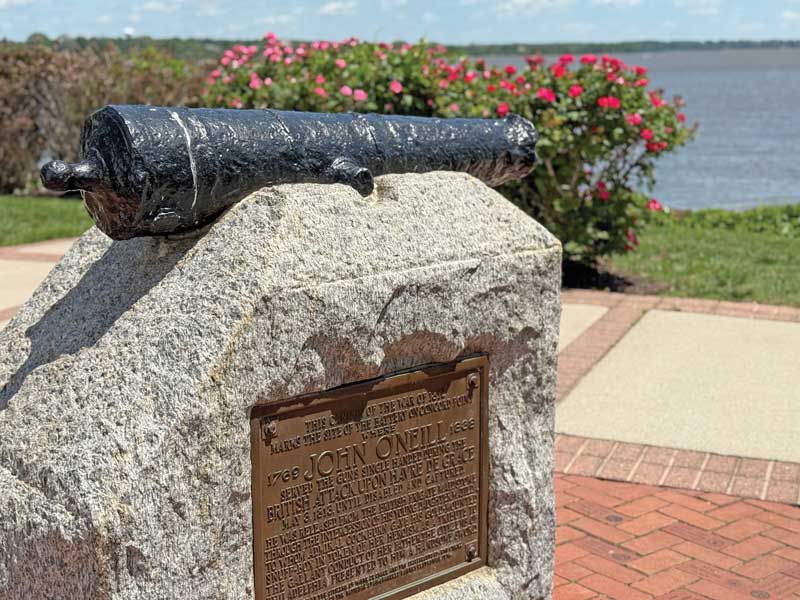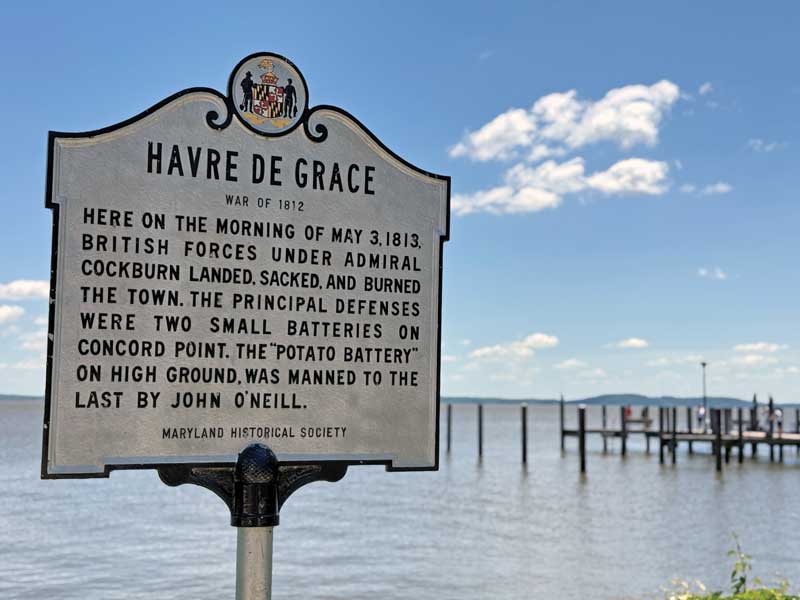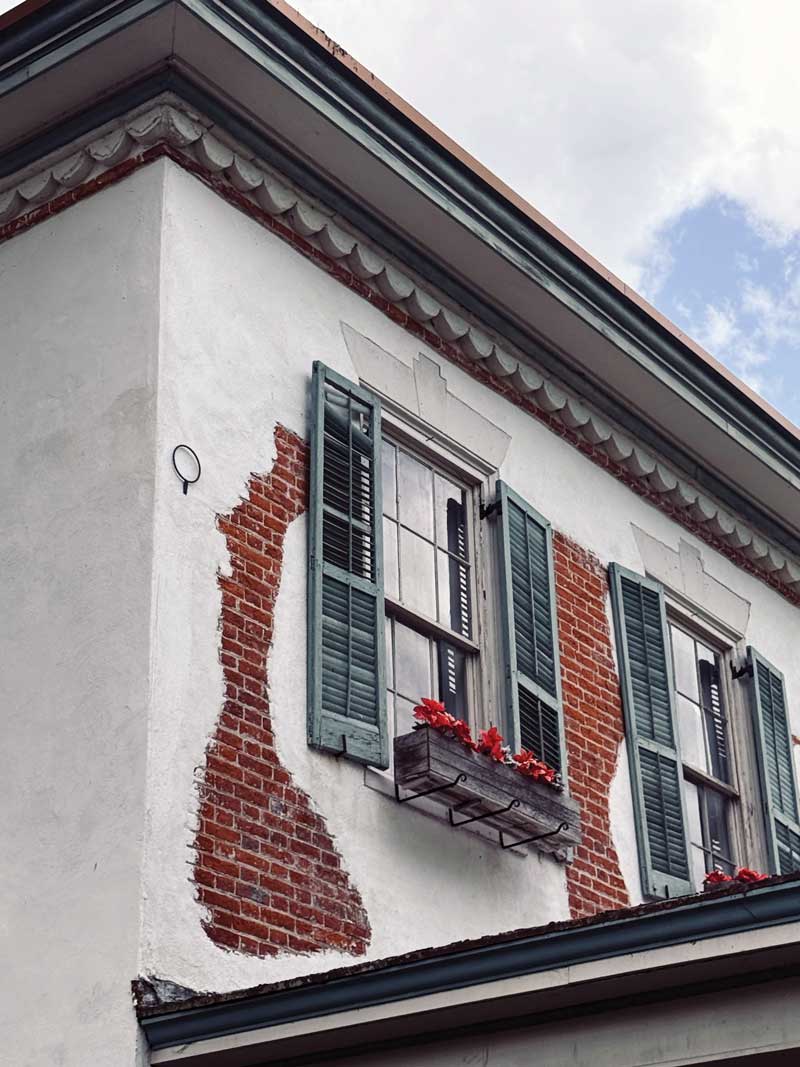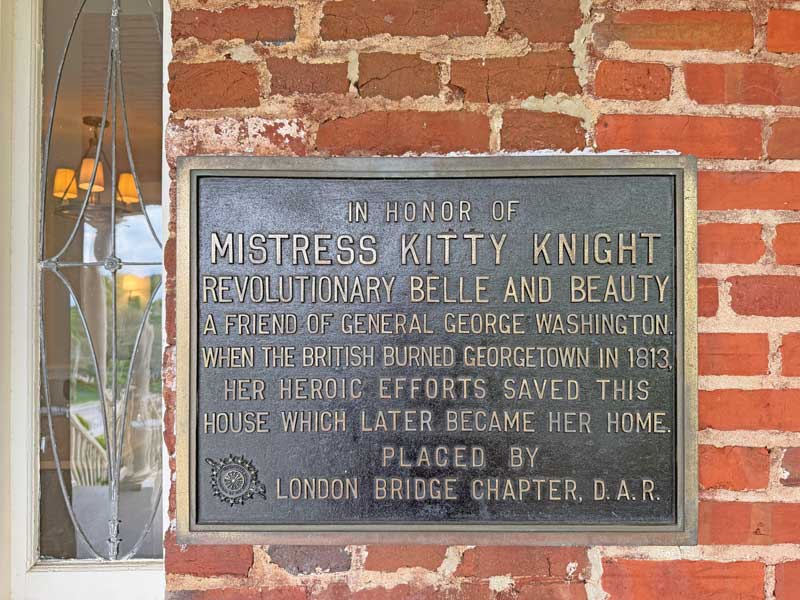Images of Francis Scott Key penning the “Star-Spangled Banner” after observing the siege of Fort McHenry are what most people envision when thinking about the War of 1812. However, many may be surprised to learn that British aggression in the Upper Chesapeake started a year and a half earlier.

British operations in the Chesapeake Bay came in response to the American invasion of Canada in 1812. On the defensive and at a disadvantage in Canada, the British hoped to redirect American troops and resources to a different theater of operation and turn the tide of public opinion against the war. With a sizeable naval presence and experience conducting amphibious operations, the British viewed the Chesapeake Bay, with its political, economic, and strategically significant targets, to be of great military importance, especially Washington, DC, and Baltimore.
To accomplish their mission, the British dispatched a fleet consisting of four ships, six frigates, and multiple smaller ships, under the command of Sir John Warren, to blockade the Chesapeake Bay on February 4, 1813. Warren’s second in command, Rear Admiral Sir George Cockburn, was responsible for the military operations and ensuing destruction inflicted upon the Bay area. Cockburn’s strategy consisted of sending troops into towns carrying the warning that armed resistance would result in the town being razed and military supplies and sailing vessels being seized or destroyed.
Cockburn arrived in the Upper Chesapeake with his flagship, HMS Marlborough, and two schooners on April 28, 1813. There he met up with a squadron of 12 or 13 shallow-draft barges powered by oar and sail and manned with a complement of 400 British troops. After resupplying, the fleet anchored off Turkey Point.

Cockburn ordered the barges up the Elk River with directions to attack any fortifications encountered on the way to their primary objective, Frenchtown. The barges travelled upstream unchallenged until reaching Welsh Point. There they were met by a small force of militia under the command of Major William Boulden. Lacking artillery, the Americans could only offer a token resistance which the British simply bypassed.
In contrast, the militia at Frenchtown had the benefit of a small wooden fort armed with three four-pounder cannons. Their mission was to defend the town’s wharf, storehouses, depot of military supplies, and two boats, the Annon Ruth and Morning Star. Though they put up a valiant defense, the militiamen were outmatched and forced to abandon their position. They withdrew to Elk Landing, hoping to defend 30 ships that had fled upstream.
The British then divided their forces. Waterborne troops burned the Frenchtown wharf and Annon Ruth and captured the Morning Star. A force of 150 marines marched a mile inland to Frenchtown. There they plundered the storehouses and military depot, burning what they couldn’t carry. Private dwellings were spared.

British naval forces continued upriver toward Elk Landing. Half a mile short of their goal, they encountered forts Defiance and Frederick as well as an iron chain stretched across the river blocking their route. The defenders opened fire with cannonballs and grapeshot, forcing the British to withdraw downstream.
Landing at White Hall Point, the British tried forcing owner Frisby Henderson to show them the road to Elkton. When Henderson refused, Hetty Boulden, an enslaved girl, offered to guide the British. The cunning Boulden had other plans; she led the unwitting British to Cedar Point, located directly across from the guns of Fort Hollingsworth at Elk Landing.
The militia commander at Fort Hollingsworth, Captain Henry Bennett, ordered his men to open fire, causing the British to withdraw and return to the fleet at Turkey Point. The British would return on July 11, 1814, and again be repulsed by the militia, sparing Elkton from a fiery demise.

When militiamen from Havre de Grace displayed a large American flag and fired on passing British ships from a six-gun battery containing 12 and six-pounder cannons, the city became the next target of British aggression. In retaliation, the British launched an attack at midnight on May 3, 1813, using small, armed boats and a force of marines and sailors.
Near dawn, the British began landing troops and opened fire with cannons and Congreve rockets. The untested militia quickly abandoned their cannons and fled, with the exception of Irishman John O’Neill, who single handedly manned a cannon until captured. The British plundered the town and set fire to 40 of the 62 houses.
John O’Neill was taken aboard the frigate HMS Maidstone as a prisoner of war. Local legend reports that his 15-year-old daughter, Matilda, met with Admiral Cockburn to negotiate his release. Cockburn was said to be so impressed with Matilda that he paroled her father three days later and gave her a gold trimmed tortoise shell snuff box for her bravery. The box is now preserved at the Maryland Center for History and Culture.

Some of the British forces continued upriver to Bell’s Ferry (Lapidum) where they were said to have helped themselves to whiskey from John Stump’s warehouse before burning 500 barrels of flour. Across the river at Creswell’s Ferry (Port Deposit), residents viewed the rising smoke with trepidation. Their fears were allayed by the conspicuous placement of a gun battery near the water that may have deterred the British.
Moving on from Havre de Grace, the main British force worked its way east, seeking a site of strategic importance, the Principio Iron Works. The foundry, which started production in 1725, housed Maryland’s first blast furnace and refinery forge. Its production of cannons for the U.S. Navy made it a target of paramount importance.
In a communiqué to Admiral Warren, Cockburn stated, “The Cecil or Principio Foundry… was one of the most valuable works of the kind in America, the destruction of it… will I trust prove of much national importance.” The British raid resulted in the capture of a five-gun battery, the destruction of the foundry, and the loss of at least 30 finished cannons.

Setting their sights farther south, the British entered the Sassafras River on the night of May 5, 1813. Their targets were Fredericktown and Georgetown. Hoping to dispense with the unpleasantries experienced at Havre de Grace, Cockburn sent two local boatmen ahead on May 6, 1813, warning the residents that military action against the British would be severely punished.
The local militia had other plans, utilizing earthworks at Fort Duffy to protect Fredericktown and Pearce Point Fort to protect Georgetown. As the British approached, approximately 400 militiamen divided between the two sides of the river and a single cannon opened fire. However, when the British began to return fire and started landing marines onshore, the militia quickly dispersed and fled into the woods.

In Fredericktown, multiple structures were set ablaze, leaving much of the town in ashes. Across the river, Georgetown faced a similar fate, with a notable exception. According to local legend, Catherine “Kitty” Knight repeatedly doused the flames that threatened the house she was living in. She implored Admiral Cockburn to spare her house and that of an elderly neighbor woman. Cockburn acquiesced, and the house she eventually purchased is now the Kitty Knight Inn.
Thus ended the British incursion of the upper reaches of the Chesapeake Bay during the early part of the War of 1812. Subsequent raids continued farther south in the Bay and culminated the following year with the burning of Washington, DC, and the siege of Fort McHenry in Baltimore.
National Historic Trail
The National Park Service’s Star-Spangled Banner National Historic Trail is a 560-mile land and water route that conveys the story of the War of 1812 throughout the Chesapeake Bay region. It features communities impacted by the war and follows American and British troop movements. To learn more, visit nps.gov/stsp/index.htm.
By Bart A. Stump, Photos By Jennifer Stump